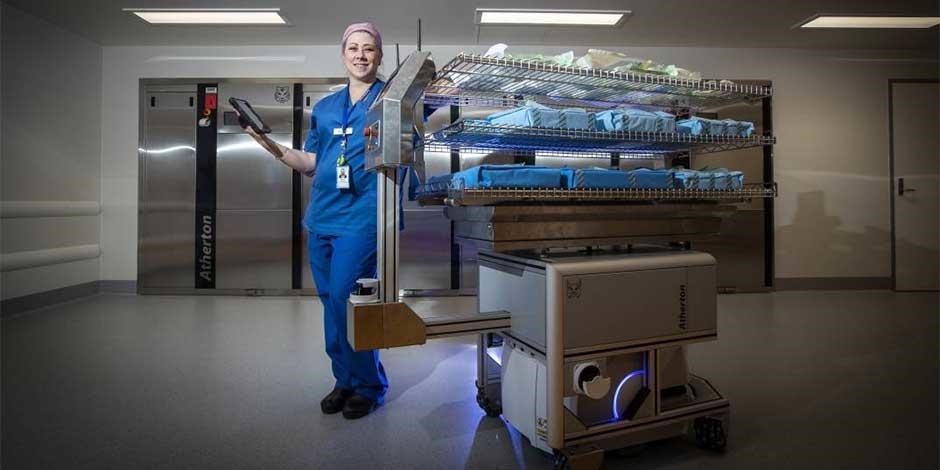How OMRON AMRs are helping to keep hospital patients and staff safe
June 06, 2022
Sterilising medical instruments is quite a tedious task. Though the sterilisation process is performed by machines, it’s a major logistical exercise.

Hospitals across the globe are prone to pathogens – organisms that cause infections and disease. Therefore, sterilisation of equipment is vital to protect patients and keep them safe and healthy.
Sterilising medical instruments is quite a tedious task. Though the sterilisation process is performed by machines, it’s a major logistical exercise.
Large numbers of instruments are continuously moved to special autoclave machines for cleansing. Like most hospitals in Australia, the Royal Hobart Hospital (RHH) in Tasmania was dependent on manual handling of instrument trolleys by staff members.
On a typical day, a trolley could weigh more than 120kg and the metal frame could get reach temperatures up to 130C. As part of a major redevelopment project, the Tasmanian Government provided funds to upgrade RHH facilities and deliver better healthcare for patients.
Collaboration with Atherton
OMRON Oceania was proud to play a major role in the RHH redevelopment project to assist those staff members who were moving heavy instrument trolleys for sterilisation. Our team worked with hospital staff to automate instrument transportation for sterilisation using state-of-the-art OMRON mobile robots.
Though mobile robots are now used extensively in various industries for material handling and transportation, integrating them with sterilisation machines was never done before. The team reached out to its partner, Atherton, a leading sterilisation machine manufacturer, to assist. Over the next few months, a prototype was showcased to the hospital board.
OMRON experts demonstrated its mobile robots' capabilities in autonomous navigation, moving through narrow pathways, detecting obstacles, interacting with lifts and machines, and working safely around humans. The board was highly impressed with the robots and gave a green light to the project.
Overcoming the hurdles
As the project entered the design and testing phase, Atherton raised concerns regarding a programming error that could impact robots' harmony with people working around it. At one stage, the Atherton team proposed going back to manual handling of trolleys to meet the deadline.
However, OMRON, is an organisation that will go to any length to deliver on all the expectations – especially when it comes to keeping people safe. With a strong determination, the team took the challenge by its horns and roped in experts from OMRON Automation Centre (ATC) to fix all the issues – and the project was back on track.
Commissioning and reviews
Finally, the solution was integrated and the robot was successfully commissioned at the hospital with a great success.
"From the initial prototype to the delivered product the team at OMRON have provided us with both the technical support and training to realise our design ambitions," says William Norcott, Electrical Engineer at Atherton. The team continues to work alongside RHH staff to further improve the system.
People are not made for heavy, dangerous, or repetitive work. If we can leave those tasks to smart robots that are able to work side by side with humans at the workplace, they can concentrate on more meaningful tasks that are far more rewarding, safe and satisfying.
You can see OMRON’s cutting-edge mobile robots in action at RHH here.
For more information on this solutions or your would like to speak with sales please contact us.